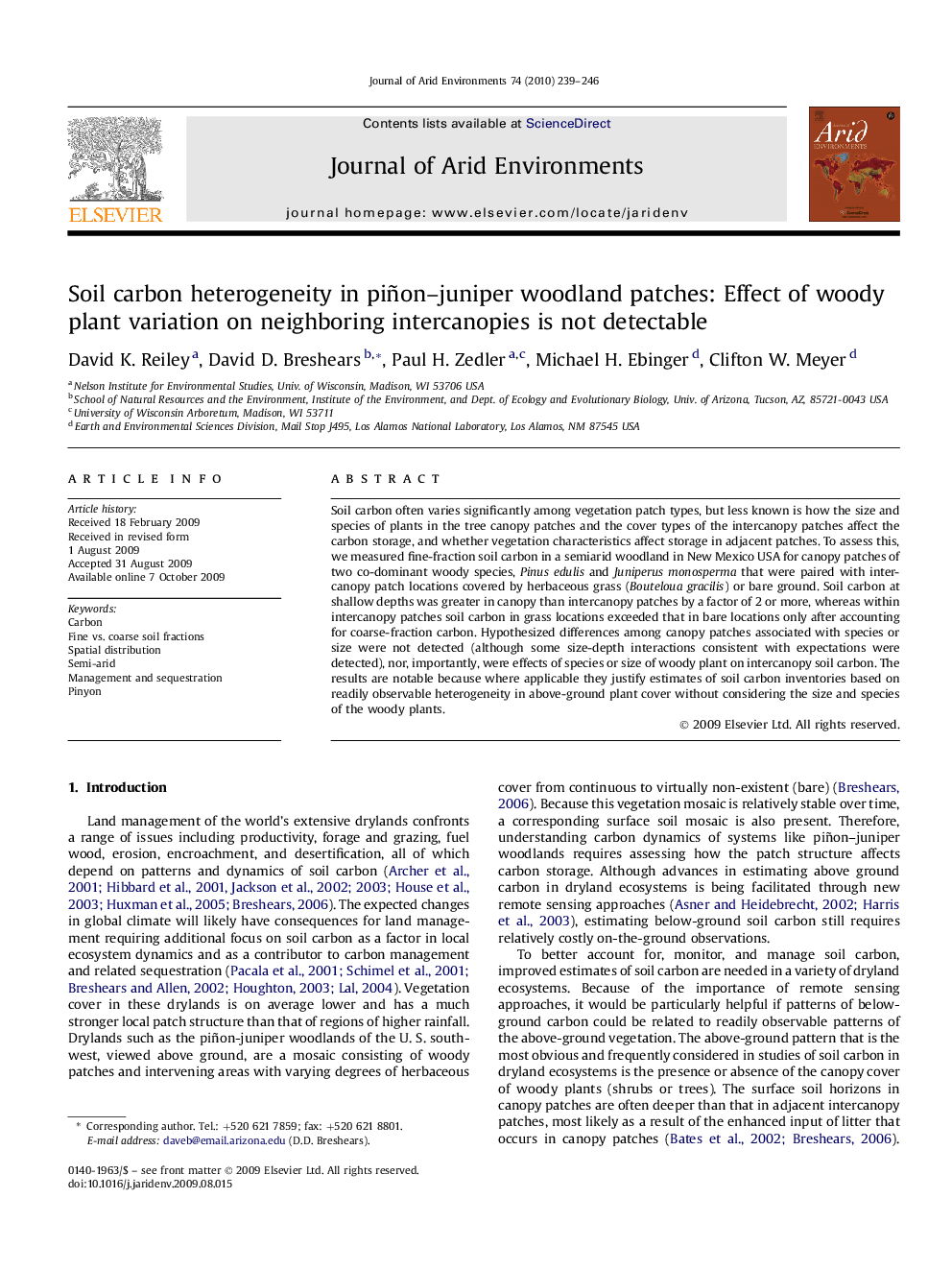| Article ID | Journal | Published Year | Pages | File Type |
|---|---|---|---|---|
| 4393904 | Journal of Arid Environments | 2010 | 8 Pages |
Soil carbon often varies significantly among vegetation patch types, but less known is how the size and species of plants in the tree canopy patches and the cover types of the intercanopy patches affect the carbon storage, and whether vegetation characteristics affect storage in adjacent patches. To assess this, we measured fine-fraction soil carbon in a semiarid woodland in New Mexico USA for canopy patches of two co-dominant woody species, Pinus edulis and Juniperus monosperma that were paired with intercanopy patch locations covered by herbaceous grass (Bouteloua gracilis) or bare ground. Soil carbon at shallow depths was greater in canopy than intercanopy patches by a factor of 2 or more, whereas within intercanopy patches soil carbon in grass locations exceeded that in bare locations only after accounting for coarse-fraction carbon. Hypothesized differences among canopy patches associated with species or size were not detected (although some size-depth interactions consistent with expectations were detected), nor, importantly, were effects of species or size of woody plant on intercanopy soil carbon. The results are notable because where applicable they justify estimates of soil carbon inventories based on readily observable heterogeneity in above-ground plant cover without considering the size and species of the woody plants.
